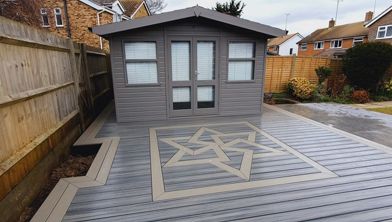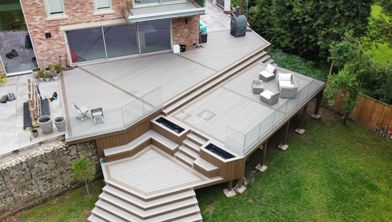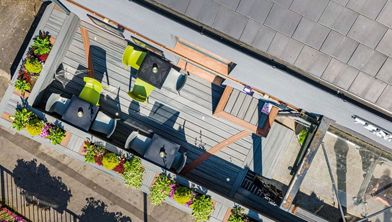Traditional Composites Versus High-Performance: What's the Difference?
What's the difference between early-generation composite decking and new high-performance Trex decking? Learn the difference today.
Understanding the difference between early-generation composite decking and new high-performance Trex decking is an important factor in appreciating the evolution of composite decking. While both are made from 95% recycled materials, the similarities stop there.
Early-generation Trex
Early-generation composite decking (including Trex Origins®, Trex Accents®, Trex Profiles®, Trex Brasilia® and Trex Contours®) first became available about 20 years ago and represented a breakthrough for low-maintenance and durability. While wood decking inevitably suffered splinters, warping and rotting, and required considerable maintenance, early-generation Trex never had to be stained and did not rot, warp or twist like wood. Periodic cleanings with a composite deck cleaner were far easier than the dreaded sanding and staining required to maintain wood decks. It was a revolutionary idea at the time.
As the category evolved, this early-generation composite came in additional colours and with grain patterns that offered a more natural appearance. Even so, all early generation wood-plastic composites, whether Trex or a competitor's product, were not stain, scratch or mould-resistant, and did fade slightly in colour as they naturally weathered. What did this mean for customers? If you dropped a hamburger or wine on your early-generation composite deck, the deck would stain. The colour you selected initially might not be the same colour you ended up with years later. And your deck would scratch if you dragged outdoor furniture across it.
To address these issues, Trex introduced a new kind of high-performance decking in 2010, Trex Transcend®. Since then, Trex has focused on additional high-performance offerings and, as of 2014, Trex no longer manufactures any early-generation composite decking.
High-performance Trex
Newer-generation Trex deck boards (Trex Transcend, Trex Enhance®, Trex Select®) are manufactured with a high-performance shell that wraps around the composite board to protect it from the elements, providing resistance to fading, staining, scratching and mould. In addition to improved performance, the shell technology offers:
- Easier maintenance: requiring only an occasional cleaning with soap and water or a pressure washer.
- Enhanced aesthetics: richer, long-lasting colour palettes and natural wood-grain patterns.
- A 25-year limited residential fade and stain warranty, in addition to a 25-year warranty against material defects.
The development of this high-performance board made the early-generation material obsolete. Homeowners now get low-maintenance, high-performance and enduring beauty that lasts for decades.
This content was partially or fully generated by AI and has been reviewed by our team to ensure accuracy and relevance.




































